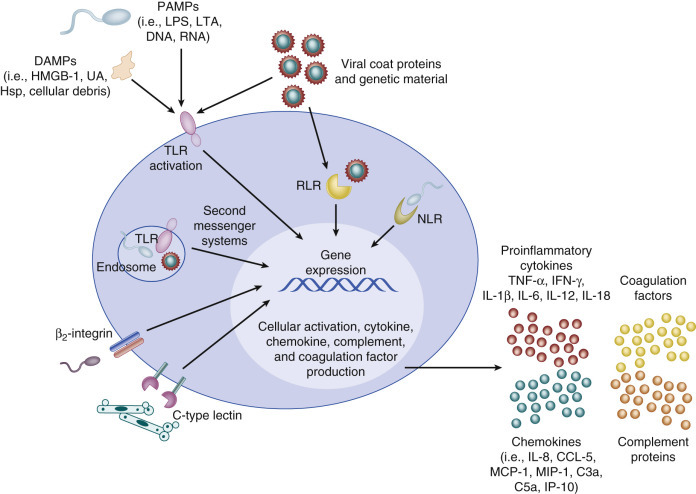Figure 152-3.

Activation of sentinel immune cells.
Sentinel cells (e.g., monocytes, macrophages) sense pathogens via pathogen-associated molecular patterns (PAMPs) or damage associated molecular patterns (DAMPs) binding to pathogen recognition receptors. Pathogen recognition receptors include Toll-like receptors, retinoic acid–inducible protein I like receptors, NOD-like receptors, C-type lectin receptors, and β2-integrins. PAMPs include lipopolysaccharide (LPS), lipoteichoic acid (LTA), DNA, and RNA. DAMPs can also be sensed through Toll-like receptors and include uric acid (UA), heat shock proteins (Hsp), and high-mobility group box 1 (HMGB-1). Signaling occurs through a series of second messengers and results in transcription and translation of cytokines and chemokines that amplify the immune response. IFN, Interferon; IL, interleukin; MCP, monocyte chemoattractant protein; MIP, macrophage inflammatory protein; NLR, NOD-like receptors; RLR, retinoic acid–inducible protein I like receptor; TNF, tumor necrosis factor; TLR, Toll-like receptor.
(From Wynn JL, Wong HR: Pathophysiology and treatment of septic shock in neonates. Clin Perinatol 37(2):439–479, 2010.)
